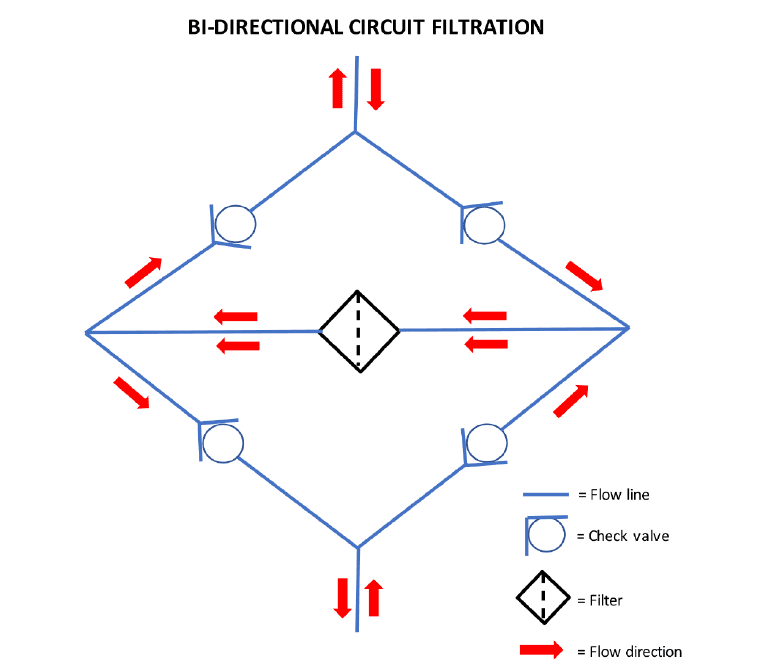Bi-directional filtration means that when flow travels upstream through the filter, there is a reverse flow through the same pipe line. That leaves the question, “how is fluid filtered properly if it travels both ways in the system in the same line?” There are bi-directional systems that filter the fluid as it flows in one direction but when flow is reversed, it is made to bypass the filter so reverse flow is not filtered at all. Why would you want to filter fluid that flows in both directions in the same line? Take for example, a lot of hydrostatic applications, the flow is reversed forcing the fluid to flow in both directions in the same line. In main loops that have drive systems, conventional filtration cannot be used by installing two different complete filter housings with filter cartridges inside. It is the same line. You would filter the contaminants while forward flow is occurring but when reverse flow is applied, it would push the contamination that was captured by the filter back into the system.
Think of the filter itself. The fluid would flow through the filter and the perforated support tube or core. The core is always manufactured with the core on the downstream side of the filter. The media captures the contaminants exposed to the flow while the core does exactly what it is supposed to do; support the media. It strengthens and keeps the rigidity of the media and while the core is perforated it allows the clean fluid to pass through. It also keeps the media intact and helps prevent the fluid from blowing through the media if too high a pressure drop is seen. If the core was on the upstream side of the filter, the media could just blow out if a similar occurrence took place. When a filter loses its integrity, damage always occurs.
Take, for example, equipment, vehicles, and machinery that have drive systems, like 4 X 4 vehicles, off-road heavy equipment vehicles, and other machinery where the fluid flows forward and is reversed in the same line. These are usually high pressure lines, too, so critical attention should be taken. Conventional filtration is not feasible in this case installing two separate filter housings, one for fluid flow in each direction. Therefore, in main circuit lines, there is no filtration installed because of this type of application. Contamination reaches higher concentrations until the pump, motor, valves, and other components can fail dramatically.
 Cross Reference Guide
Cross Reference Guide
 Cross Reference Guide
Cross Reference Guide